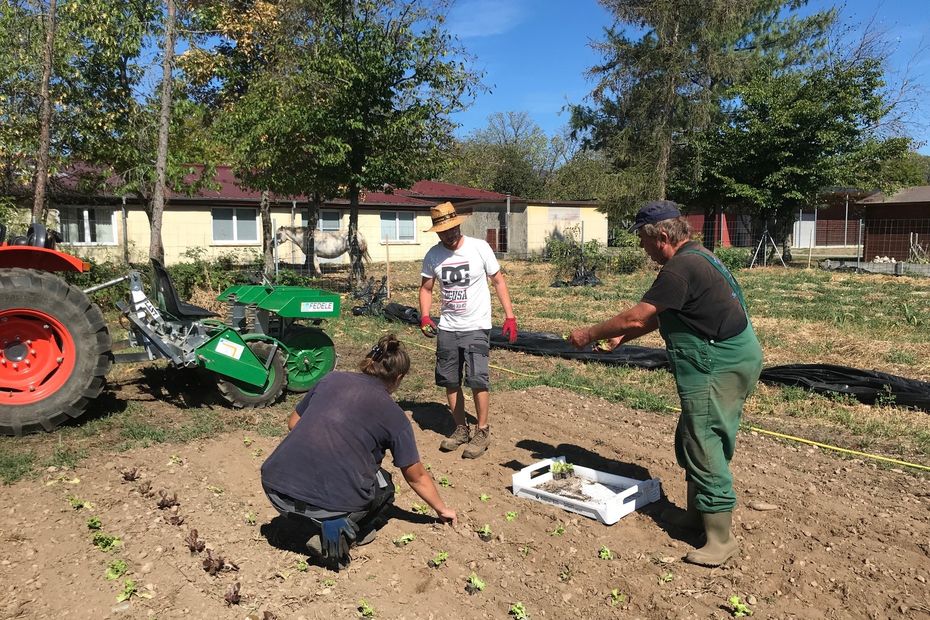A collective and ecological challenge for the Saint-André de Cernay Institute. The 126 hectares of land on the farm have hosted eight farmers for a few weeks. They will propose another agricultural model there and work hand in hand with the residents with disabilities who live there.
Irrigated corn as far as the eye can see and ultra-mechanized harvesting techniques, the image ended up disturbing the current leaders of theSant’Andrea Institute de Cernay (Upper Rhine) which depends on the association Adele de Glaubitz. Four years ago they therefore decided to change the agricultural model to make sense of their actions. This is how a collective of eight farmers was formed. Horticulturists, producers of aromatic and medicinal plants, breeders … They are slowly settling in, all happy to be able to work with the residents of the institute.
“Alone we go faster, together we go farther”, in Cernay the African proverb alone sums up the essence of the principle of collective intelligence demonstrated by the leaders of the Saint-André Institute and by the farmers who will work the land there. After years of monoculture, he gives way to diversified agriculture on land converted to organic. A collective and ecological challenge in which some of the 500 disabled residents of the institute will participate.
To understand, you should know that since the creation of the site by the Congregation of the Sisters of the Cross in 1871, the institute has had a farm and a vegetable garden. Until the 1970s, nuns and residents lived there almost self-sufficiently. Everything that was consumed on site was also produced there. Work came in the fields that required more and more time “,what the collective agreement of the time did not allow“As Claude Hermann, a former employee, tells us. The development of mechanization in those years had the better of peasant activities.
–
We wanted an educational project for our residents
Marc Jermann, Director of the Common Services Institute
–
Offering farmers looking for land to come and settle on 126 hectares while allowing residents who wish to work alongside them, that’s the goal. Four years ago, therefore, a partnership was created with land of ties, Organic in the Great East and the Brick 48, to create a collective of farmers. 50 people came forward and eight were selected. They are all from the Cernay sector, they raise cows or sheep, they produce cereals, fruit, vegetables and flowers and they all want to participate in this human and collective adventure.
–
For Erice Granveaux this is a first installation. “The collective aspect is reassuring for my wife and me“believes, also very interested in working with the residents of the site who will come to participate in the work on the farm.
For Marc Jermann, director of the institute’s common services, this project once again allows a real educational activity. He recalls that the site aims to maintain the results achieved by people with disabilities through various activities or within ESAT and allow them to participate in the workshops they have chosen.
The project is also part of an environmental request (the biological conversion of the land was completed several months ago) and allows more farmers to work together. “We also didn’t want a single farmer, with the help of large agricultural machines, to manage our 126 hectares of land. We wanted to welcome several farmers. However, there are many farmers in search of land here“.
Each farmer rents part of the land. The products are sold at the farm shop, twice a week. The rest goes to the institute canteen. The goal is, as soon as possible, to regain food self-sufficiency.
–



